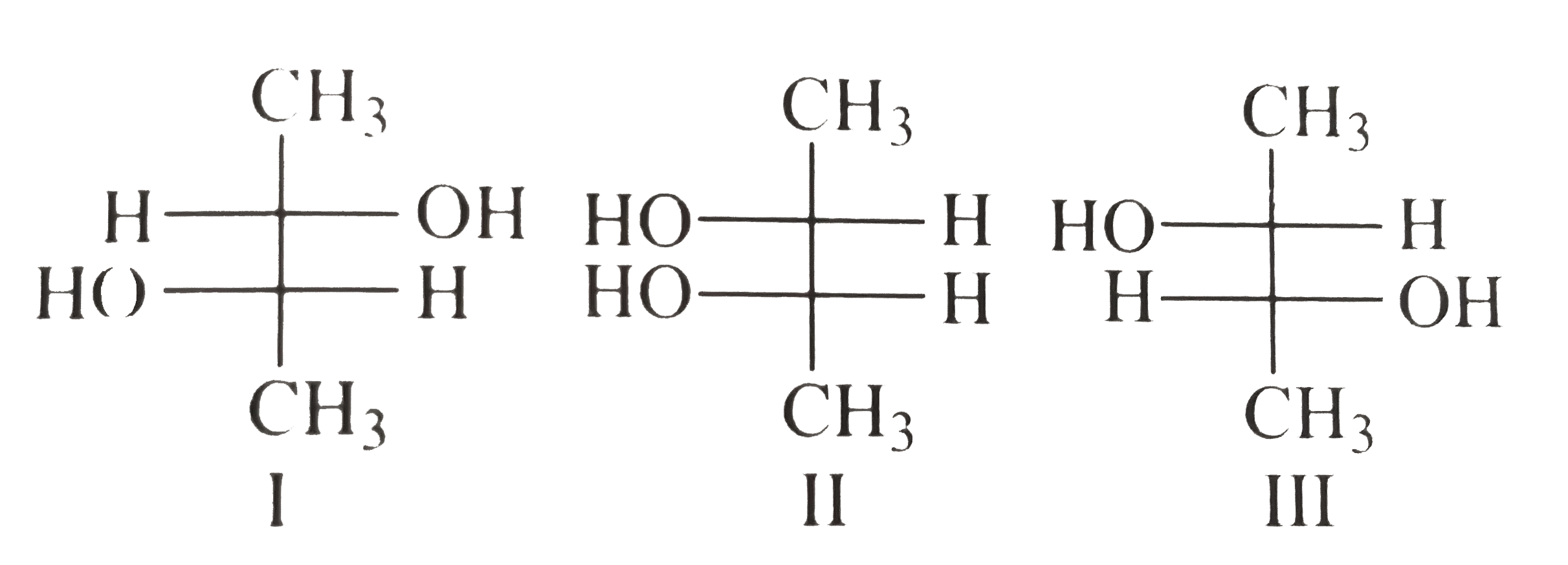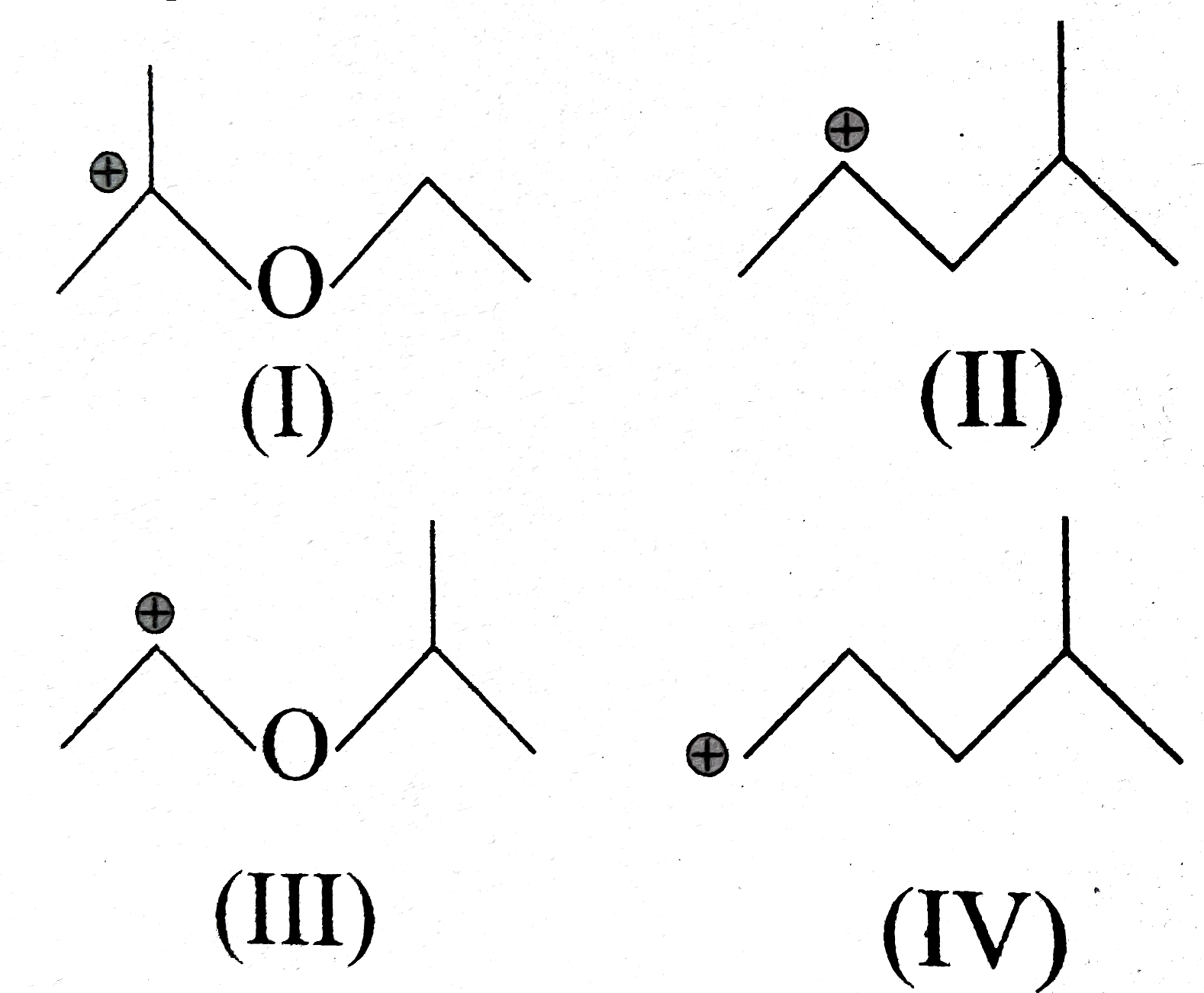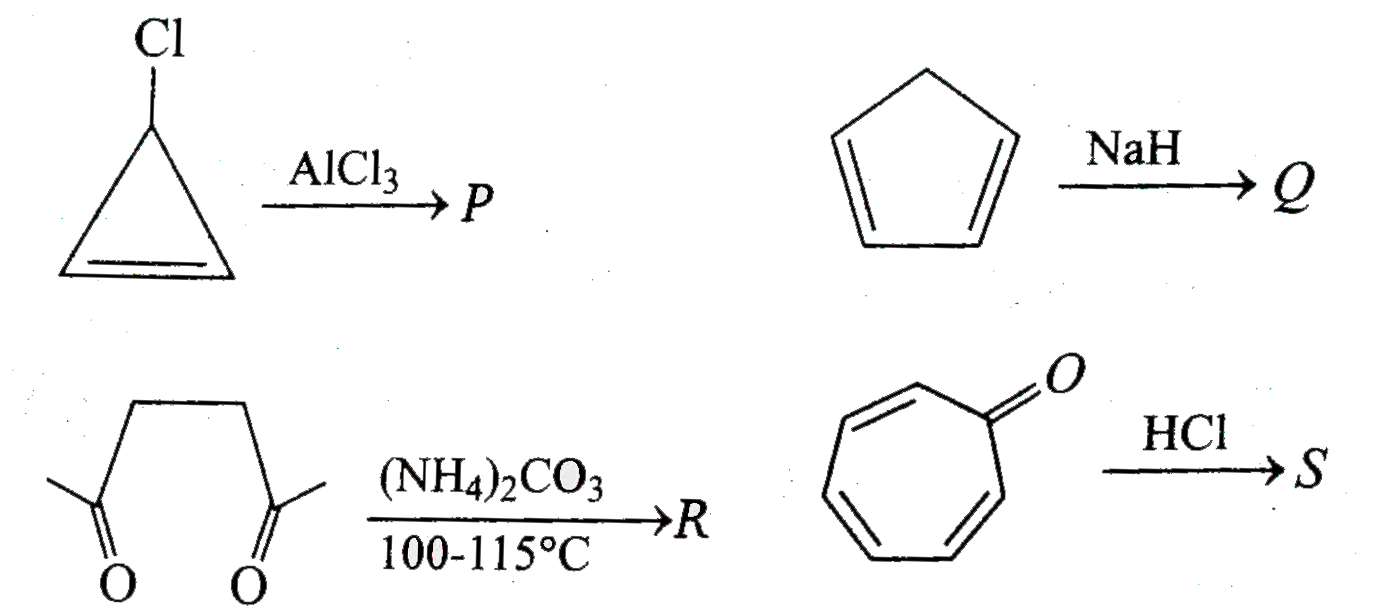Complete Solutions to JEE Main And Advanced of chapter ORGANIC CHEMISTRY BASICS of Class 12 book with complete answers and questions
| Class 12 | CHEMISTRY |
| Chapter | ORGANIC CHEMISTRY BASICS |
| IIT-JEE PREVIOUS YEAR | JEE Main And Advanced |
| Number Of Questions | 100 |
| Academic Year | 2023-24 |
The absolute configuration of
 is
is
View SolutionThe IUPAC name of the following compound is

View SolutionThe number of stereoisomers obtained by bromination of trans-2-butene is
View SolutionThe IUPAC name of `C_(6)H_(5)COCl` is
View Solution
`C_(2)` is rotated anti-clockwise `120^(@)` about `C_(2)-C_(3)` bond. The resulting conformer is
View SolutionWhich of the following compounds exhibits, stereoisomerism?
View SolutionThe number of isomers for the compound with molecular formula `C_(2)BrClFI` is
View SolutionWhich of the following compounds will exhibit geometrical isomerism?
View SolutionThe optically active tartaric acid is named as `D-(+)-` tartaric acid because it has a positive
View SolutionHow many optically active stereoisomers are possible for butane-2, 3-diol ?
View SolutionIsomers which can be interconverted through rotation around a single bond are
View SolutionThe enolic form of acetone contains
View SolutionThe number of isomers of `C_(6)H_(14)` is
View SolutionIf two compounds have the same empirical formula but different molecular formulea, they must have
View SolutionWhich of the following will have least hindered rotation about carbon-carbon bond?
View SolutionGive the `IUPAC` name of the following compound.
`CH_(2) = CH - CH (CH_(3))_(2)`
View SolutionAn isomer of ethanol is:
View SolutionThe IUPAC name of the compound having the formula is
`H_(3)C-underset(" "CH_(3))underset(|)overset(" "CH_(3))overset(|)(C)-CH=CH_(2)`
View SolutionWhich of the following compounds will exhibit cis-trans (geometrical ) isomerism ?
View SolutionThe compound which is not isomeric with diethyl ether is :
View SolutionThe IUPAC name(s) of the following compound is (are) ltbr.

View SolutionThe incorrect combination of names for isomeric alcohols with molecular formula `C_(4)H_(10)O` is/are
View SolutionWhich of the given statement(s) about N, O, P and Q with respect to M is/are correct?

View SolutionThe correct statement(s) about the compound
`H_(3)C(HO)HC-CH=CH-CH(OH)CH_(3) (X)` is/are
View SolutionThe correct statement(s) concerning the structures E, F and G is/are

View SolutionThe correct statements `(s)` about the compound given below is/are:

View SolutionTautomerism is not exhibited by
View SolutionWhich of the following compounds will show geometrical isomerism?
View SolutionWhich of the following has/have asymmetric carbon atom?
View SolutionKeto-enol tautomerism is observed in
View SolutionOnly two isomeric monochloro derivatives are possible for
View SolutionStatement I: Molecules that are non-superimposable on their mirror images are chiral.
Statement II: All chiral molecules have chiral centres.
View SolutionIsomers which are mirror images are knows as ….. (superimposable, non-superimposable, enantiomers, diastereomers, epimers)
View SolutionGive True or False. `2,3,4`- Trichloropentane has three asymmetric carbon atoms.
View SolutionRelation between `m`-Chloro bromobenzene and `m` bromo chloro benzene is.
View SolutionThe total number of stereoisomers that can exist for M is

View SolutionThe total number(s) of stable conformers with non-zero diple moment for the following compound is/are

View SolutionThe total number of cyclic structure as well as stereoisomers possible for a compound with the molecular formula `C_(5)H_(10)` is:
View Solution`mu` observed `= Sigma mu_(i)X_(i)`
where `mu_(i)` is the dipole moment of the stable conformer and `X_(i)` is the mole fraction of that conformer.
(a) Write the stable conformer for `(Z--CH_(2)--CH--Z)` in Newman's projection. If `mu_(solution) = 1.0` D and mole fraction of the antiform `=0.82`, find the `mu` gauche form.
(b) Write the most stable meso conformer of `underset(CHDY)(underset(|)(CHDY))`
If (i) `Y = CH_(3)` about `C_(2)-C_(3)` rotation and (ii) `Y = OH`, about `C_(1)-C_(2)` rotation.
View SolutionGltcerine contain one ………….. hydroxy group.
View SolutionIdentify the pairs of enantiomers and diastereomers from the following:

View SolutionDiscuss the hybridisation of carbon atoms in allene `(C_(3)H_(4))` and show the `pi`-orbital overlap.
View SolutionWrite tautomeric form of phenol
View SolutionWrite the IUPAC name of the following compound:
`H_(3)C-underset(CH_(3))underset(|)(N)-underset(" "C_(2)H_(5))underset(|)overset(" "CH_(3))overset(|)(C)-CH_(2)-CH_(3)`
View SolutionGiven the IUPAC name of the following compound:

View SolutionWrite the IUPAC name of `CH_(3)CH_(2)CH=CH-COOH`.
View SolutionWrite the structural of all the possible isomers of dichloroethene. Which of them will have zero dipole moment?
View SolutionWrite structural formula for all the isomeric alcohols having the molecular formula `C_(4)H_(10)O`.
View SolutionWhich of the following molecules is least resonance stabilised?
View SolutionThe distillation techique most sited for separating glycerol from spent lye in the soap industry is
View SolutionThe correct order of acidity for the following compounds is

View SolutionFor the estimation of nitrogen, 1.4 g of an organic compound was digested by Kjeldahl's method and the evolved ammonia was absorbed in 60 mL of `M//10` sulphuric acid. The unreacted acid required 20 mL of `M//10` sodium hydroxide for complete neutralisation. The percentage of nitrogen in the compound is
View SolutionA gaseous hydrocarbon gives upon combustion, 0.72 g of water and 3.08 g of `CO_(2)`. The empirical formula of the hydrocarbon is
View SolutionThe order of stability of the following carbocation

View SolutionArrange the following compounds in the order of decreasing acidity.
I
II
III
IV
View SolutionA solution of (-l)- chloro -1 phenyletane in toluene recemises slowly in the presence of a small amunt of `SbCI_(5)` due to the formation of .
View SolutionIn allene `(C_(3)H_(4))`, the type(s) of hybridisation of the carbon atoms, is (are)
View SolutionAmong the following compounds, the most acid is:
View SolutionGive the stability of the following resonance structures
(a) `H_(2)C = overset(o+)N =overset(Θ)N`
(b) `H_(2)overset(o+)C -N =overset(Θ)N`
(c ) `H_(2)overset(Θ)C -overset(o+)N -= N`
(d) `H_(2) overset(Θ)C - N = overset(o+)N` .
View SolutionIn the following carbocation, `H//CH_3` that is most likely to migrate to the positively charged carbon is :
`H_(3)C^(1)-overset(H)overset(2|)underset(OH)underset(|)(C)-overset(3o+)underset(H)underset(|)(C)-overset(H)overset(4|)underset(CH_(3))underset(|)C-overset(5)CH_(3)`
View SolutionThe correct acidity order of the following is

View SolutionHyperconjugation involves the overlapping of the following orbitals :
View SolutionThe correct of stability for the following species is :

View SolutionAmong the following, the least stable resonance structure is :
View SolutionWhen benzene sulphonic acid and P-nitrophenol are treated with `NaHCO_3`, the gases released, respectively, are :
View Solution4-Methyl benzene sulphonic acid with sodium acetate to give
View SolutionFor 1-methoxy-1, 3-butadiene, which of the following resonating structure is least stable?
View SolutionArrange in the order of increasing acidic strengths.

View SolutionAmong the following, the molecule with the highest dipole moment is :
View SolutionWhich of the following represent the given mode of hybridisation `sp^(2)-sp^(2)-sp-sp` from left to right?
View Solution
The product A will be
View SolutionWhich of the following acids has the smallest dissociation constant?
View SolutionIdentify the correct order of boiling points of the following compounds: `underset(1)(CH_(3)CH_(2)CH_(2)CH_(2)OH)`, `underset(2)(CH_(3)CH_(2)CH_(2)CHO)`
`underset(3)(CH_(3)CH_(2)CH_(2)COOH)`
View SolutionWhich of the following hydrocarbons has the lowest dipole moment?
View SolutionThe correct order of basicities of the following compounds is
 , `" "underset((2))(CH_(3)CH_(2)NH_(2))`
, `" "underset((2))(CH_(3)CH_(2)NH_(2))`
`underset((3))((CH_(3))_(2)NH)" "underset((4))(CH_(3)CONH_(2))`
View SolutionAmong the following the strongest base is
View SolutionWhich of the following has the most acidic hydrogen ?
View SolutionThe most unlikely representation of resonance structures of p-nitrophenoxide ion is:
View SolutionAmong the following compounds, the strongest acid is:
View SolutionIn the following compounds,

the order of acidity is:
View SolutionThe decreasing order of strength of the bases, `OH^(-), NH_(2)^(-), H-C-=C^(-)` and `CH_(3)-CH_(2)^(-)`:
View SolutionThe hybridisation of `C` atoms in `(C - C)` single-bond of `H - C -= C - CH = CH_(2)` is :
View SolutionAmongst the following the most basic compound is :
View SolutionThe number of `sigma`-and `pi`-bond in 1-buten-3-yne is:
View SolutionThe compound which would give the most stable carbcation on dehydration is :
View SolutionPolarisation of electrons in acrolein may be written as :
View SolutionThe bond between carbon atom (1) and carbon atom (2) in the compound `N -= C - CH = CH_(2)` in involves the hybridisation as :
View SolutionAmong P, Q, R and S, the aromatic compounds(s) is/are

View SolutionThe hyperconjugative stabilities of tert-butyl cation and `2`-butene, respectively, are due to
View SolutionAmongst the given option, the compound(s) in which all the atoms are in one plane in all the possible conformations (if any), is/are
View SolutionIn the Newman projection for `2,2`- dimethylbutane

`X` and `Y` can, respectively, be
View SolutionThe molecule (s) that will have dipole moment is/are:
View SolutionThe compounds in which `C` uses its `sp^(3)`- hybrid orbitals for bond formation are:
View SolutionPhenol is less acidic than
View Solutionp-Hydroxybenzoic acid has a lower boiling point than o-hydroxybenzoic acid.
o-Hydorxybenzoic acid has intramolecular hydrogen bonding.
View SolutionStatement I: p-Nitrophenol is a stronger acid than o-nitrophenol.
Statement II: Intramolecular hydrogen bonding makes the o-isomer weaker than p-isomer.
View SolutionMatch the reactions in Column I with appropriate types of steps/reactive intermediate involved in these reactions as given in Column II.

View SolutionMatch the reaction in Column I with appropriate options in Column II.

View SolutionThe kind of delocalisation involving sigma bond orbitals is called………..
View SolutionThe bond dissociation energy needed to form the benzyl radical from toluence is……….. Than the formation of the methyl radical from methane.
View Solution
JEE Main And Advanced questions and complete solutions for chapter ORGANIC CHEMISTRY BASICS of IIT-JEE PREVIOUS YEAR (CHEMISTRY) of Class 12